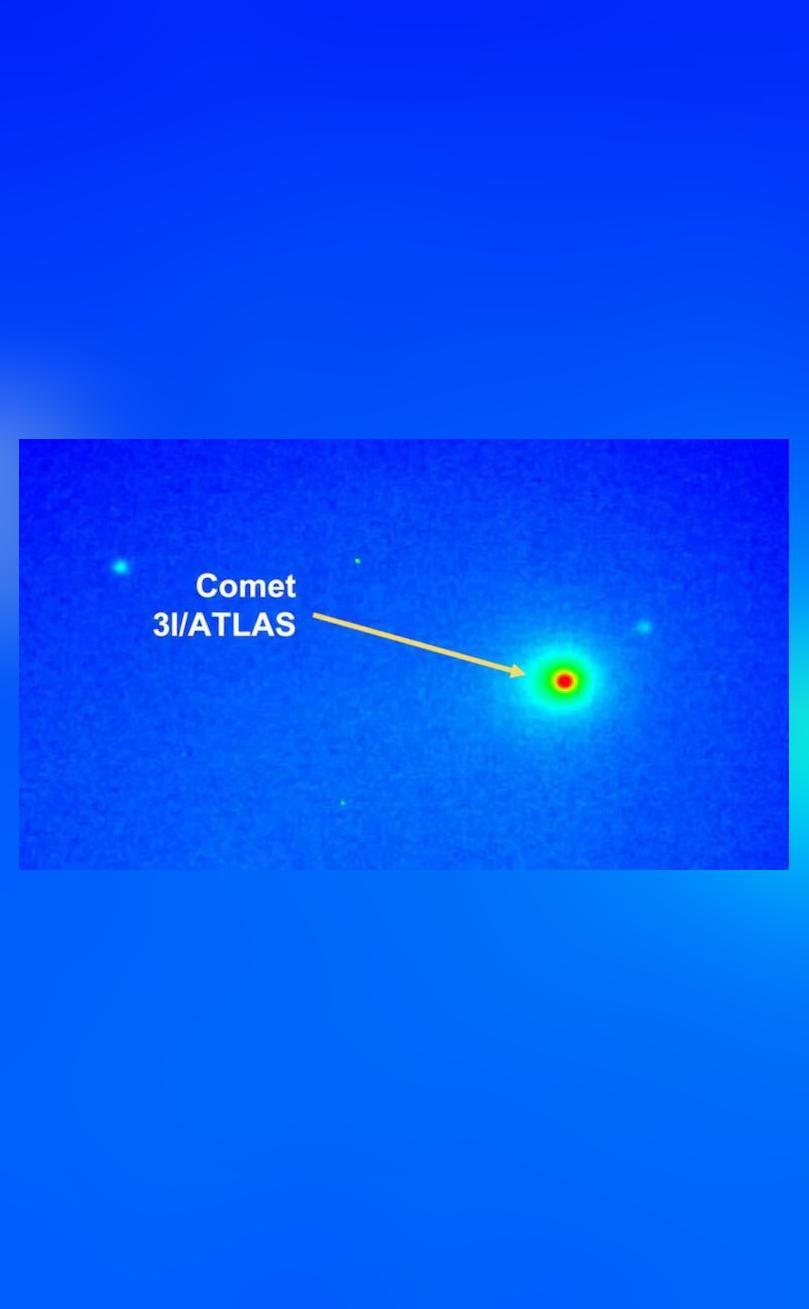
ISRO releases new image of mysterious interstellar object captured from Mount Abu telescope
The Indian Space Research Organisation (ISRO) has made a significant announcement, releasing a striking new image of a mysterious interstellar object that has been traveling through our solar system. The object in question is 3I/ATLAS, an interstellar comet that has been fascinating astronomers and space enthusiasts alike. The latest image of 3I/ATLAS was captured using the 1.2-metre telescope at the Physical Research Laboratory’s Mount Abu Observatory, located in the state of Rajasthan, India.
The interstellar comet 3I/ATLAS is a relatively new discovery, having been first detected in 2019 by the Asteroid Terrestrial-impact Last Alert System (ATLAS) survey. Since then, astronomers have been closely monitoring its movement and behavior as it traverses our solar system. According to ISRO, the comet is currently moving out of the inner solar system after its perihelion passage, which is the point at which it is closest to the Sun.
The new image released by ISRO provides a stunning glimpse of the comet’s tail, which is estimated to be around 100,000 kilometers long. The image was captured on June 10, 2022, using the 1.2-metre telescope at the Mount Abu Observatory. The telescope is equipped with a state-of-the-art camera system that allows for high-resolution imaging of celestial objects.
The 3I/ATLAS comet is of significant interest to astronomers due to its interstellar origin. It is believed to have originated from outside our solar system, possibly from a nearby star system. The comet’s composition and structure are expected to provide valuable insights into the formation and evolution of our solar system, as well as the possibility of life existing elsewhere in the universe.
ISRO’s release of the new image of 3I/ATLAS is a testament to the organization’s commitment to advancing our understanding of the universe. The image is a result of the tireless efforts of astronomers and researchers at the Physical Research Laboratory, who have been working closely with international partners to study the comet’s behavior and characteristics.
The study of interstellar comets like 3I/ATLAS is an exciting and rapidly evolving field of research. These comets offer a unique window into the formation and evolution of our solar system, as well as the possibility of life existing elsewhere in the universe. By studying the composition and structure of these comets, astronomers hope to gain a deeper understanding of the fundamental processes that shape our universe.
The release of the new image of 3I/ATLAS is also a significant milestone for India’s space program. ISRO has been at the forefront of space research and exploration in recent years, with a number of notable achievements, including the successful launch of the Chandrayaan-1 lunar mission and the Mangalyaan Mars orbiter.
In conclusion, the release of the new image of 3I/ATLAS is a significant development in the field of astronomy and space research. The image provides a stunning glimpse of the comet’s tail and is a testament to the capabilities of the 1.2-metre telescope at the Mount Abu Observatory. As astronomers continue to study the comet’s behavior and characteristics, we can expect to gain a deeper understanding of the universe and its many mysteries.
The study of interstellar comets like 3I/ATLAS is an exciting and rapidly evolving field of research, and ISRO’s release of the new image is a significant contribution to this field. As we continue to explore and understand the universe, we can expect to make new and exciting discoveries that will challenge our current understanding of the cosmos.
For more information on this topic, you can visit the following news article:
https://www.moneycontrol.com/science/isro-releases-striking-new-image-of-comet-3i-atlas-from-mount-abu-telescope-article-13686197.html/amp






